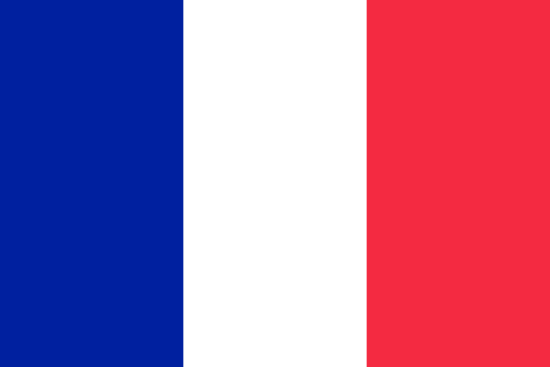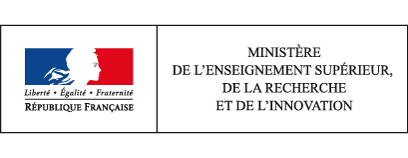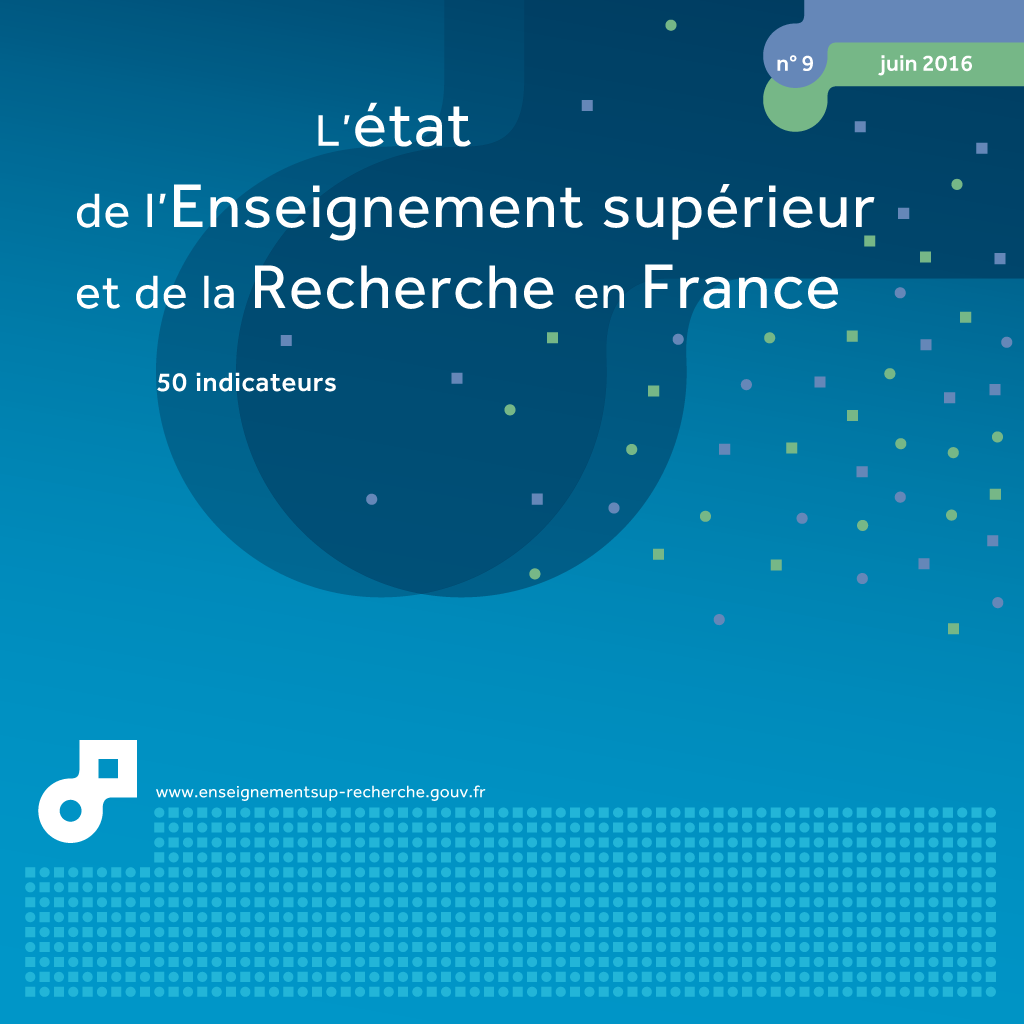12 students in higher education
This page has been updated. Read 12. students in higher education in Higher education & research in France, facts and figures 10th edition - June 2017
With 2,470,000 students enrolled at the start of the 2014-15 academic year, numbers in higher education have increased significantly (+1.6%). There have never been so many students. This rise is due to the growth in the proportion of young people accessing higher education, even though the number of young people has fallen.
In 2014-15, 2,470,000 students enrolled in higher education in mainland France and the overseas departments. The number of students enrolled increased for the sixth consecutive year (+1.6%, i.e. 38,400 students more than in 2013): there have never been so many students in France. In five years, 157,000 additional students have entered higher education (+7% between 2009 and 2014). Growth was three times less during the five previous years with 44,000 additional students between 2004 and 2009 (chart 12.01). Changes in the size of generations should have led to a 100,000 drop in the number of young people enrolled in 2014-15 compared to 2009-10 (table 12.02). The increase in numbers is not therefore due to a "demographic effect" but a massive "educational effect" since 2009, although it was much more modest in the five previous years (see methodology section opposite).
In 2014-15, 1,531,300 students enrolled in universities in mainland France and overseas departments, which represents 62% of all enrolments in higher education, including 5% in preparation for the university diploma in technology (DUT). Numbers at university increased by 7.5% in 10 years (table 12.03). The increase in preparations for the DUT was 3.6% in ten years. The main areas of growth were therefore on other university courses, especially during the last two years. The situation per discipline is highly contrasting. In Law and even more in Healthcare, numbers increased very significantly between 2004 and 2009, and the increase continued at a more moderate rate over the next 5 years. In Economics, Economic and Social Administration (AES), growth was 4.2% over the decade, and nearly zero over the last 5 years. Finally, the recent upturn in university numbers is noticeable in the "Arts, Humanities, Languages, Human and Social Sciences" group, and especially "Sciences, Physical Education and Sports Sciences and Techniques (STAPS)", whose numbers fell between 2004 and 2009 and increased between 2009 and 2014.
One student in six, i.e. 437,700 students, attends a private educational institution (chapter 09). Numbers have been virtually stable for two years, but have significantly increased since 2000. Although in total 55.2% of students are women, their proportion varies according to the courses. There is a large majority of women in Humanities and Human Sciences (70.1%) and on paramedical or social work courses (83.9%), but they are in the minority on more selective courses (CPGE, IUT) and, above all, on scientific courses, only representing 27.2% of engineering students (chart 12.04).
126,500 advanced technician diplomas (BTS) were awarded in 2013 (chart 12.05), a rise of 25% in 10 years. 46,300 university technology diplomas (DUT) were awarded the same year, 4% less than ten years previously. Between 2003 and 2013, the number of vocational Bachelor's degrees awarded (47,300 in 2013) multiplied by 3.7, while the number of general Bachelor's degrees fell by 6%. 121,300 Masters and 13,700 Doctorates were awarded in 2013, numbers that have grown considerably since 2003, but have stabilised in recent years. Furthermore, 31,600 engineering degrees were awarded in the 2013 session, an increase of 20% in ten years. Business and management schools awarded 34,400 degrees (excluding continuous education and apprenticeships), a figure that has increased significantly over ten years (+41%).
MENESR-DEPP.
How to cite this paper :
close
Key figures
students
Metropolitan France + overseas departments
students
Metropolitan France + overseas departments
students
Metropolitan France + overseas departments
students
Metropolitan France + overseas departments
students
Metropolitan France + overseas departments
students
Metropolitan France + overseas departments
Metropolitan France + overseas departments
Metropolitan France + overseas departments
Metropolitan France + overseas departments
Metropolitan France + overseas departments
Metropolitan France + overseas departments
Metropolitan France + overseas departments
Metropolitan France + overseas departments
Metropolitan France + overseas departments
Metropolitan France + overseas departments
Metropolitan France + overseas departments
Metropolitan France + overseas departments
Metropolitan France + overseas departments
Metropolitan France + overseas departments
diplomas awarded
Metropolitan France
diplomas awarded
Metropolitan France
diplomas awarded
Metropolitan France
diplomas awarded
Metropolitan France
diplomas awarded
Metropolitan France
diplomas awarded
Metropolitan France
Metropolitan France + overseas departments
Metropolitan France + overseas departments
Metropolitan France + overseas departments
Metropolitan France + overseas departments
Metropolitan France + overseas departments
12.01 Changes in the number of students in higher education (in thousands, base=100 in 1990)
MENESR-DEPP
You can embed this chart to your website or your blog by copying the HTML code and pasting it into the source code of your website / blog:
close
12.02 Changes in the number of students in higher education (in thousands)
The total number of students in higher education increased by 156,600 at the start of the 2014-15 academic year, compared to the start of the 2009-10 academic year. Without the effect of other factors, the changes in the size of generations (demographic factor) would have resulted in 103,500 fewer students enrolling.
1 Scopes defined in RERS points 6.1 and 6.2.
You can embed this table to your website or your blog by copying the HTML code and pasting it into the source code of your website / blog:
close
12.03 Breakdown of students at French universities in 2014-15, by programme and subject area (in thousands)
You can embed this table to your website or your blog by copying the HTML code and pasting it into the source code of your website / blog:
close
12.04 Proportion of women enrolled on the main higher education courses (in %)
1 2013-14 instead of 2014-15
2 including engineering courses dependent on universities, national polytechnical institutes (INP), technology universities and engineering courses delivered in partnerships.
You can embed this chart to your website or your blog by copying the HTML code and pasting it into the source code of your website / blog:
close
12.05 Development in the number of degrees awarded in the main higher education courses (in thousands)
You can embed this chart to your website or your blog by copying the HTML code and pasting it into the source code of your website / blog:
close
Related statistical publications
 Note flash SIES 10 - Number of students in higher education in 2015-2016 - Elisabeth Algava, Agnès Lièvre - August 2016
Note flash SIES 10 - Number of students in higher education in 2015-2016 - Elisabeth Algava, Agnès Lièvre - August 2016 
 Note d'information SIES 16.04 - Students on engineering courses - Agnès Lièvre - July 2016
Note d'information SIES 16.04 - Students on engineering courses - Agnès Lièvre - July 2016 Around 33,000 degrees were awarded in 2014, an increase of 22% in ten years.
The engineering degree is awarded following five years of study after the baccalauréat, the last three as part of an engineering cycle.
The trajectories are varied: half of entrants to the first year of an engineering cycle come from CPGE (classes preparing for admission to Grandes Ecoles) and 21% from an integrated preparatory cycle. Parallel access routes help to diversify the recruitment of entrants to an engineering cycle: 13% hold a DUT (university technology diploma) and 7% hold a Higher technical certificate (BTS) or Bachelor's degree.
Although representing nearly half of scientific baccalauréat holders, only 29% of engineering students are women. Some universities and engineering schools offer LMD Master's programmes (Bachelor's-Master's-PhD) in engineering which can lead to employment in the engineering sector. In 2014, 6,300 students on these Master's programmes obtained their qualification.

 Note flash SIES 09 - Student numbers on engineering courses in 2015-2016 - Cynthia Wavoéké - July 2016
Note flash SIES 09 - Student numbers on engineering courses in 2015-2016 - Cynthia Wavoéké - July 2016 Seven in ten students are trained in public institutions, i.e. under the authority of the Ministry of National Education, Higher Education and Research (MENESR) (82,000 students), or under the authority of other ministries (20,000 students).
Three in ten students attend private institutions (+6.2%).

 Note flash SIES 06 - Number of university students in 2015-2016 - Aurélie Delaporte, Diane Marlat - May 2016
Note flash SIES 06 - Number of university students in 2015-2016 - Aurélie Delaporte, Diane Marlat - May 2016 
 Note d'information SIES 16.02 - Economics, Management and Economic and Social Administration (AES) students at university in 2014-15 - Agnès Lièvre - April 2016
Note d'information SIES 16.02 - Economics, Management and Economic and Social Administration (AES) students at university in 2014-15 - Agnès Lièvre - April 2016 Universities, which this study focuses on, offer courses in Management, Economics, Economic and Social Administration (AES) and eco-management multi-sciences.
This variety results in different course content and prospects. For these different courses, the main access route is still the Economic and Social Sciences baccalauréat.
Courses in AES, which is more generalist and multi-disciplinary, appeal to a great diversity of profiles, in particular technological and vocational baccalauréat holders, whereas the Economics route, which has a more theoretical content, attracts scientific baccalauréat holders.
In the end, depending on the course, between 30% and 50% of students obtain their Bachelor's degree in 3 or 4 years. Nearly one-third of Bachelor's graduates continue onto a Master's programme. Depending on the course, 46% to 61% of Master's students complete their studies in 2 years.

 Note flash SIES 04 - Students in Advanced technician's sections in 2015-2016 - Mathias Denjean - April 2016
Note flash SIES 04 - Students in Advanced technician's sections in 2015-2016 - Mathias Denjean - April 2016 
 Note d'information SIES 15.08 - Significant increase in the number of students in higher education in 2014-15, particularly at university - Diane Marlat - December 2015
Note d'information SIES 15.08 - Significant increase in the number of students in higher education in 2014-15, particularly at university - Diane Marlat - December 2015 In five years, higher education has welcomed over 150,000 new students (+7%). Engineering schools have seen a particularly high rise in numbers.
By contrast, the number of students in State-recognised business schools has stabilised, following years of marked increases. The numbers enrolling in classes preparing for admission to Grandes Ecoles (CPGE) has risen moderately (+0.8%). On short courses (University technology institutes (IUT) and Advanced technician's sections (STS)), numbers have been stable.
At the start of the 2014-15 academic year, all the local education academies apart from two saw an increase in students. Just over one student in six was enrolled in a private education institution. Female students continued to be in the majority. One in eight students were foreign nationals.

 Note d'information SIES 15.06 - Students enrolled at French universities in 2014-2015 - Diane Marlat, Ophélie Rogel - August 2015
Note d'information SIES 15.06 - Students enrolled at French universities in 2014-2015 - Diane Marlat, Ophélie Rogel - August 2015 In particular, there were more students on Bachelor's degree programmes (+2.2%) and Master's programmes (+2.3%), but the number of PhD students was lower (-1.7%).
There was a dynamic increase in enrolments of new baccalauréat holders at university (+2.9%), although this increase was partly due to parallel enrolments in classes preparing for admission to Grandes Ecoles (CPGE).
There was a very dynamic increase in enrolments on Scientific courses and Humanities and Social Sciences courses.
The number of new technological baccalauréat holders increased significantly in University technology institutes (IUT) (+7.0%). The proportion of foreign students at university fell slightly to 14.3%, as did the number of foreign students not holding a French baccalauréat (11.0%). The proportion of foreign students on PhD programmes remained stable, at 41.5%.

 Atlas régional, les effectifs d'étudiantsRegional atlas - student numbers in 2013-2014 - Isabelle Kabla-Langlois, Yann Caradec, Patrick Marchegay, Laurence Dauphin, Laurent Fauvet - June 2015
Atlas régional, les effectifs d'étudiantsRegional atlas - student numbers in 2013-2014 - Isabelle Kabla-Langlois, Yann Caradec, Patrick Marchegay, Laurence Dauphin, Laurent Fauvet - June 2015 It is organised by region and provides a detailed overview of higher education territories: the maps give a clear overall vision of the distribution of students and the tables provide details of these students by agglomeration and commune according to course type.
Translation
 Etat de l'enseignement supérieur et de la rechercheL'état de l'Enseignement supérieur et de la Recherche en France n°9 - Juin 2016
Etat de l'enseignement supérieur et de la rechercheL'état de l'Enseignement supérieur et de la Recherche en France n°9 - Juin 201612 - les étudiants en formation dans l’enseignement supérieur - Elisabeth Algava






